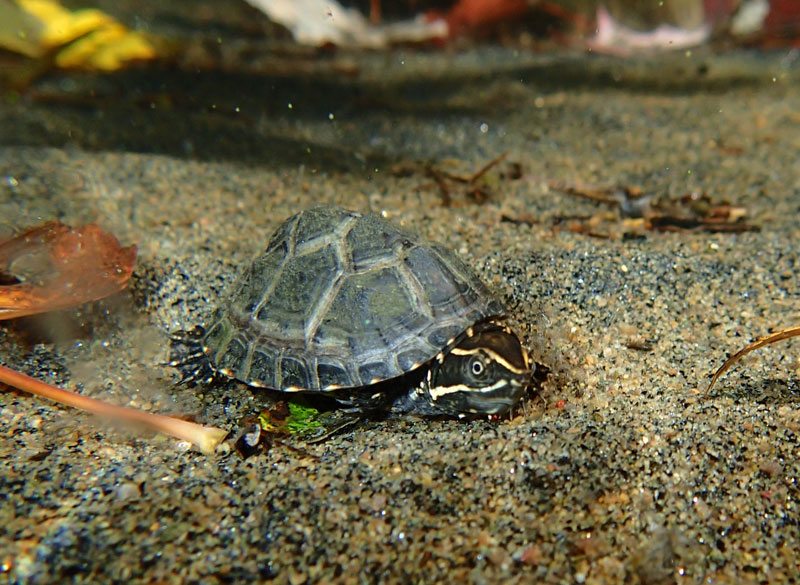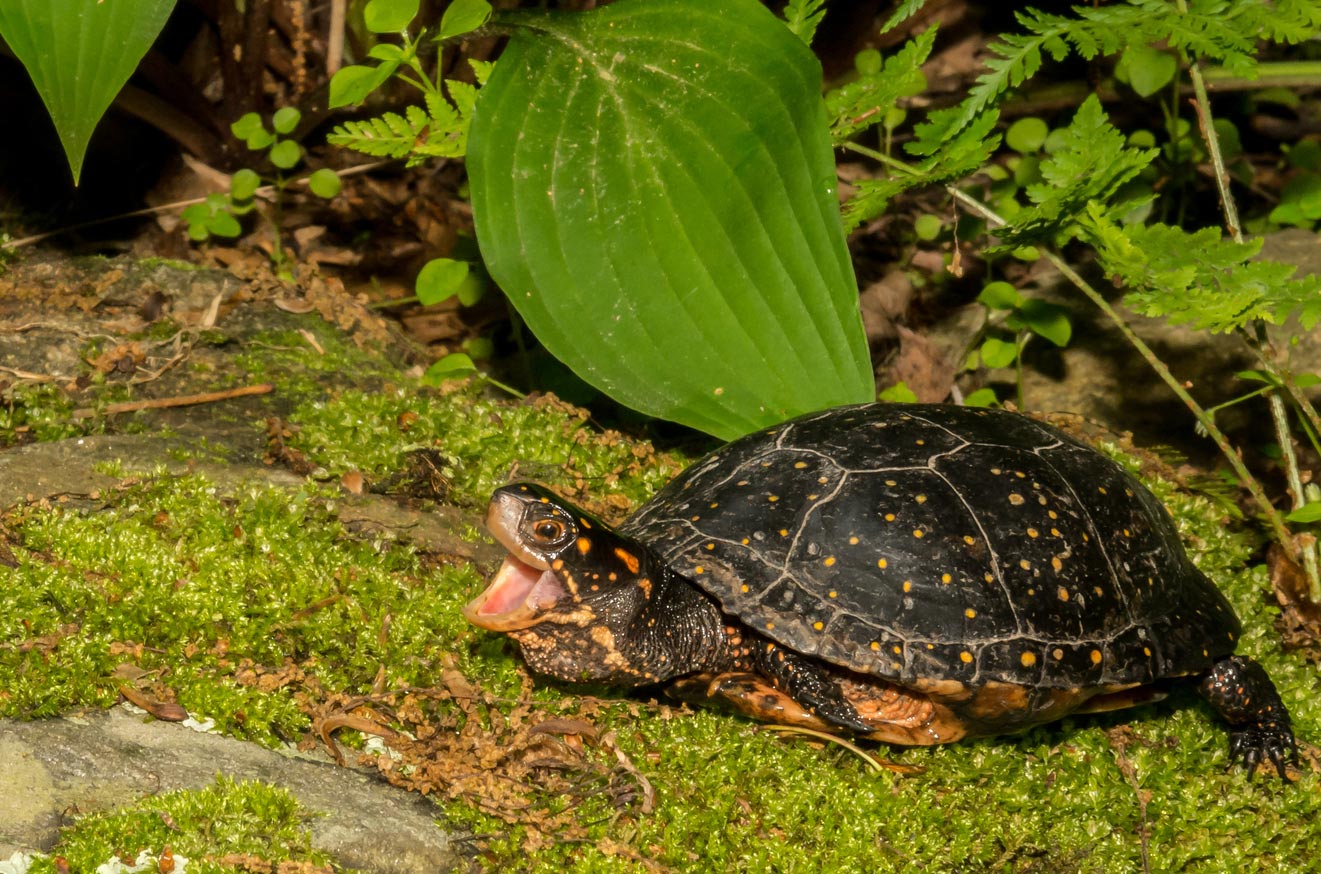
SCIENTIFIC NAME
Sternotherus odoratus
DESCRIPTION
The Eastern Musk Turtle has a narrow, highly arched shell. The shell and body are brownish, but usually Eastern Musk Turtles have two stripes on the side of the head, one above and one below the eye. When disturbed, the turtle can produce a musky, skunk-like scent.
RANGE
Southern Ontario and southern Québec
HABITAT
Eastern Musk Turtles live in shallow lakes, rivers, marshes and ponds with soft, muddy bottoms and a slow current. Females nest in open areas along shorelines or in muskrat lodges. In winter, Eastern Musk Turtles hibernate under water on the bottom of lakes and wetlands.
DIET
BEHAVIOUR
undefinedPRIMARY ECOSYSTEM ROLES
- 0







